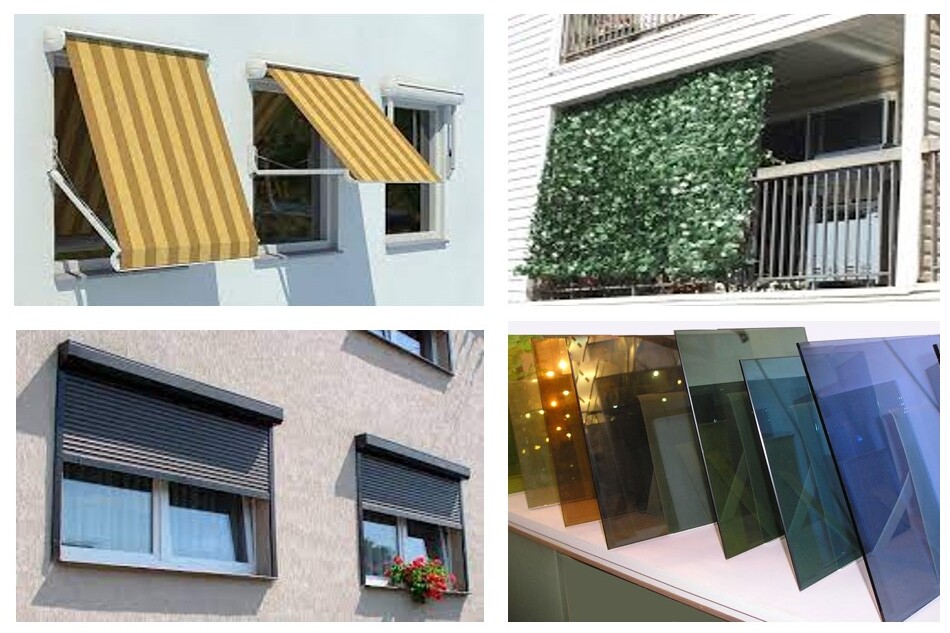Cooling buildings with shading

A good insulation is expensive, so the best way to manage summer heat is to effectively shade your windows and the building. Properly designed shading, such as louvres, can cut off the sun's rays at an angle and block unwanted heat gain. It creates comfortable conditions in the house, leads to a reduction in electricity costs, allows you to use the air conditioner in an economical mode.
Window shading can be provided both by natural landscaping and adjustable building elements. Adjustable shading elements of buildings can be awnings, external blinds, tapestries, light shelves, shutters, as well as overhangs that are wide enough to prevent the sun from entering the windows. The optimal overhang length depends on the size of the window and the position of the sun during the cooling season.
You can stick a special film on the window, which will serve as a barrier from the sun and reliably hide the room from prying eyes during the day (specularity works only during daylight hours, at night the effect of the film will be the opposite). Such a coating practically does not obscure the view from the window, while it allows you to significantly reduce the temperature in the room in hot weather. In addition, it is possible to tint double-glazed windows without a mirror effect: with such a film, the glass will simply become darker and less transparent.
Planting fast-growing trees and shrubs to protect the most vulnerable parts of a building from the sun is also an effective shading measure. When positioning and choosing a tree planting style, the angle of incidence of the sun should be taken into account, which, in turn, depends on the orientation of the building and the latitude of its location.
